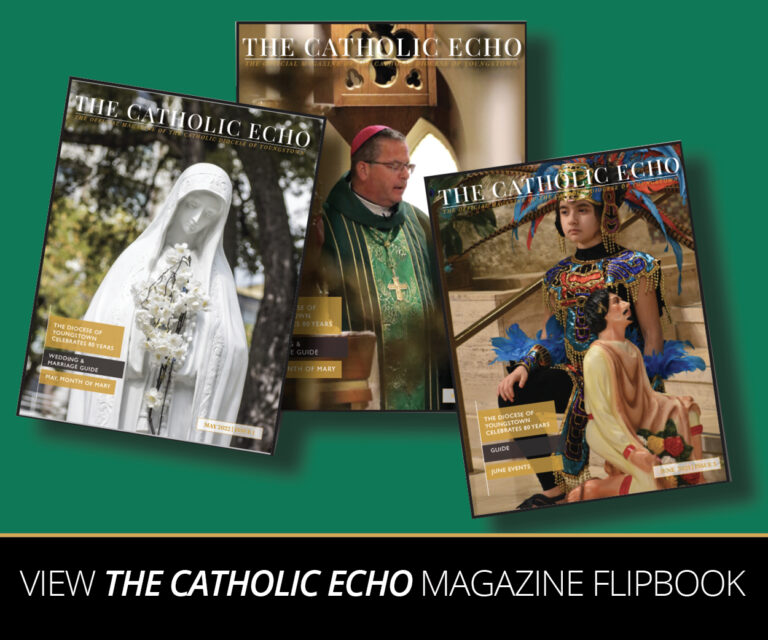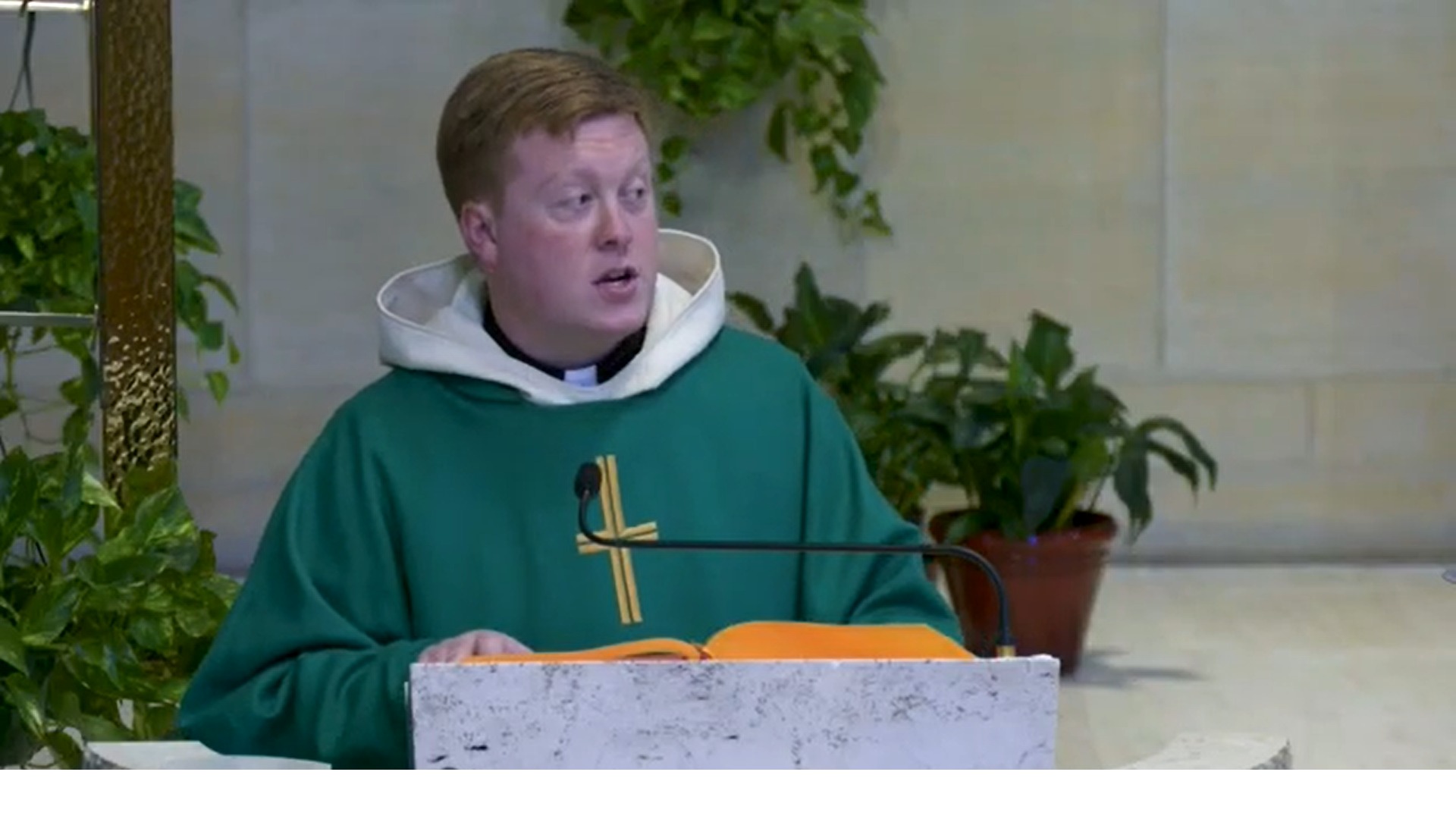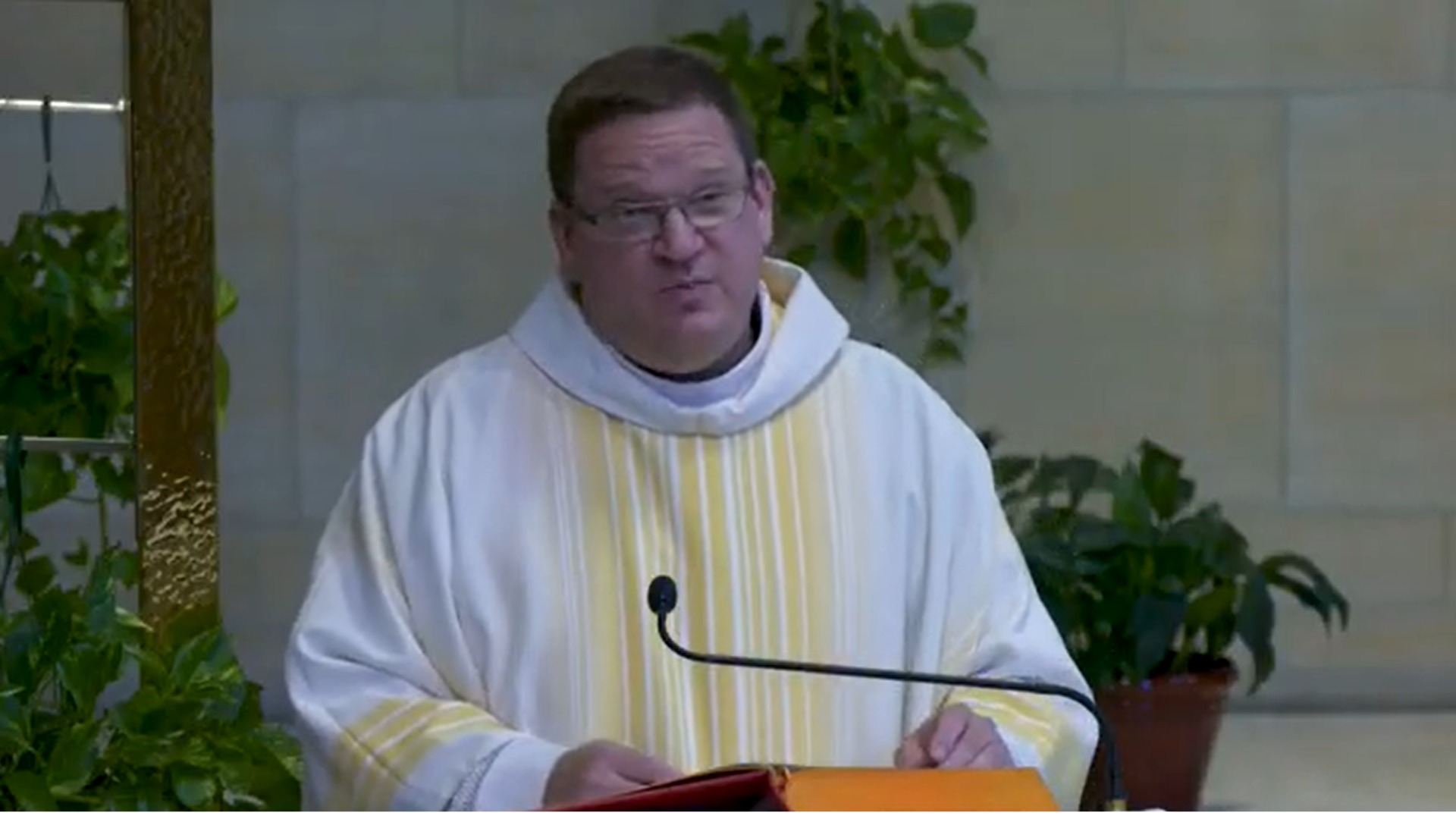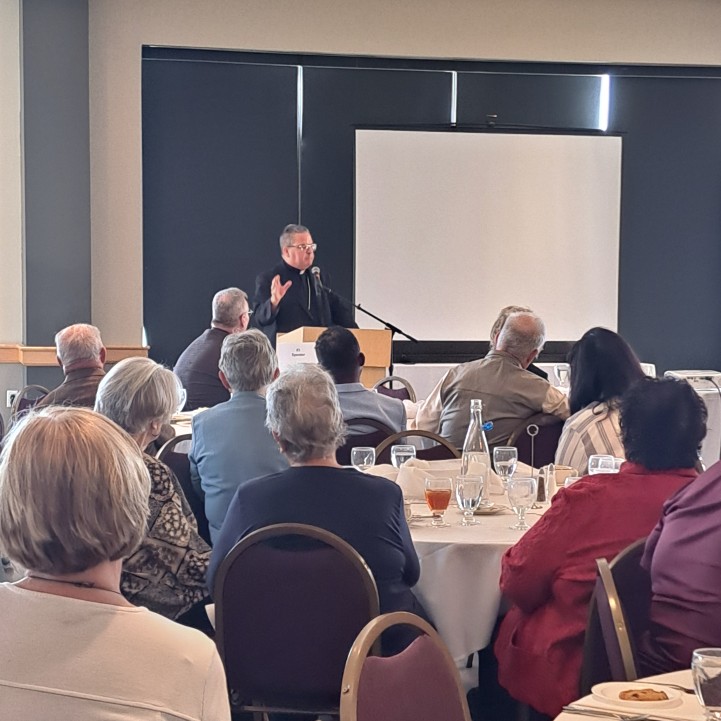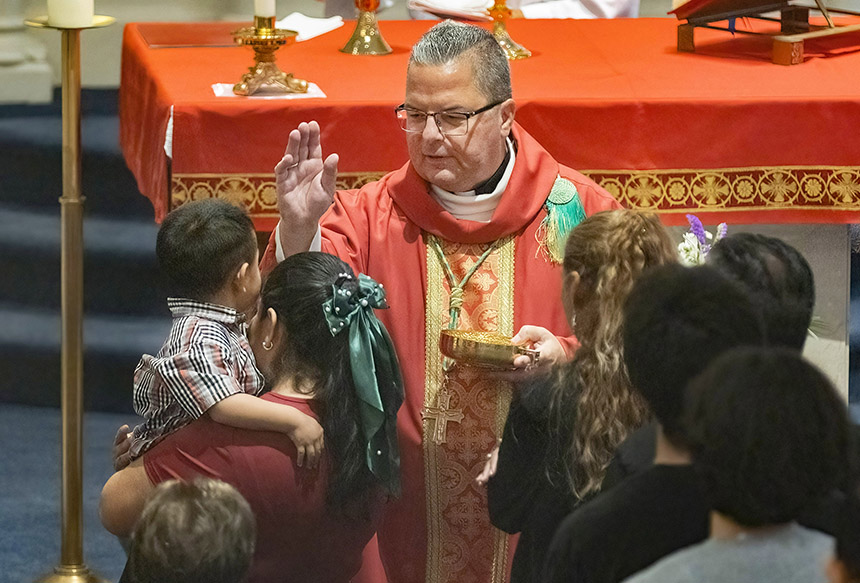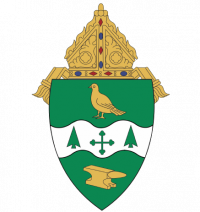The Parish of St. Columba was first established in 1847. It would eventually become the Cathedral Church when the Diocese of Youngstown was formed in 1943, more than 80 years ago. It’s a story of a community of faith and rising from the ashes after tragedy.
Saint Columba was the first parish in the City of Youngstown and all Mahoning County. The first church built in 1851 was to be on land in Brier Hill that was donated by David Todd, who became the 25th governor of the State of Ohio, the first and so far only governor from Mahoning County. A second church was built in 1864, and in 1897 the third church was erected on the site of the present cathedral. Decades later, tragedy struck on September 2nd, 1954, when a lightning strike caught the cathedral on fire, eventually collapsing the roof leaving the building in ruins. The blaze was estimated to cost $1.25 million dollars in damage. It would take four years to rebuild the structure to its current form.
“I’ve actually talked to a number of people who saw the cathedral burn. And it was devastating to them, it was their church. It was a symbol of the church in the diocese. So it was very painful, that a beautiful place of worship was destroyed by fire,” says Very Reverend Monsignor Robert Siffrin, the Diocesan Vicar of External Affairs & Special Projects.
The Cathedral is Romanesque in influence, featuring a high nave and soaring campanile, constructed out of a blend of stone, steel and glass. It’s a monument of faith, dedication and vision. One-hundred thirty-two feed above street level is the campanile, or bell tower stands on the site of the original church. It was the first church bell in Youngstown, calling the faithful to midnight mass on Christmas Eve. The vestibule of the Cathedral, with its portals of stainless steel and multi colored stained glass, give the visitor a sense of oneness with the outside world, and yet it creates a tranquility and sanctuary into the awesome presence of Almighty God.
“So distinctive in its architectural beauty. The sanctuary itself, calls people into the liturgy. And the beautiful mosaic on the front wall, depicts the patron saints of the immigrants who came from Europe to Youngstown. So it’s kind of a history of the communion of saints,” says Monsignor Siffrin.
The Cathedral’s door feature fifty silhouetted symbols of Catholic theology and faith, including: Our Lord, the Seven Sacraments, the Church and the Mother of Christ. Above the door hangs the Coat of Arms of current Bishop David J. Bonnar installed on January 12, 2021. The Coat of Arms of five former Youngstown bishop’s: James A. McFadden, Emmet M. Walsh, James W. Malone, Thomas J. Tobin and George V. Murry, hang on the walls of the Eucharistic chapel.
The Cathedral gets its name from the Irish missionary, Columba, who lived from 521 to 597 AD and founded monasteries throughout Ireland and Scotland. His life of heroic virtue and his dedication to God and the Church are colorfully conveyed in the St. Columba Window which rises high above the choir gallery. The window is divided into 49 openings, each adorned with jewel-like medallions and shields, all of which tell the story of Columba’s life and faith, along with the sacramental life and faith of the Catholic Church.
The choir gallery is also home to the 39th ranked, 25-bell-carillon pipe organ, designed from Casavante Brothers of St. Hyacinthe in Quebec, Canada.
The main body of the Cathedral, which seats 1,000, is flanked by rows of piers made up of mosaic columns. Above the arches on the interior walls are placed the Stations of the Cross, made of aluminum and bronze. The 14 scenes depict Christ’s journey to Calvary. Shades and colors of blue, red, purple, orange, green and amber create a dazzling rainbow effect reflected from the walls, the floor and the bronze chandeliers. It was antique and precious glass blown in Germany, England and Italy used for the stain glass windows. The Apostles are used for the themes of the nave windows; and, appropriately so, since the Church is built on the foundation of the Apostles who were also the first bishops.
“The glass, and the stone, the marble, it comes from different parts of the world, reflecting the sense of a universal church. And of course the steel comes right here from the valley. Which was known as a place of steel,” says the Most Rev. Bishop David J. Bonnar.
There are depictions of Saint Paul, Mary Mother of Christ. The lower windows depict the Apostle’s Creed. The eucharistic Chapel is dedicated to the Sacred Heart of Jesus. And opposite the tabernacle is the wood-carved relief of the Sacred Heart, opening up to St. Margaret Mary Alacoque, the visitation nun—whose special awe and reverence endeared Christ’s heart to hers.
In the enclosure on either side of the sanctuary are similar hand-carved reliefs of the Blessed Virgin and St. Joseph, her spouse. The sanctuary, with its hand-chiseled travertine marble Altar, Ambo, and bishop’s chair, lends an air of utter simplicity, yet richness to the celebration of the Mass. A dramatic background to the entire sanctuary is the gigantic mosaic panel of satin glass representing various ethnic roots of the faithful of the Diocese of Youngstown. The upper right portion depicts the creative hand of God, surrounded by the angelic choir. In the center, depicted in heroic size, is the Blessed Mother of God, being touched by Gabriel, the angel of the Annunciation.
“Whether I’m processing in or processing out, I always find myself looking way, way up to our Blessed Mother. And of course this reflects the Immaculate Conception, the Patroness of our United States. Just that gaze, not only of looking to Mary, but of looking up to heaven,” says Bishop Bonnar.
The Cathedral of St. Columba, the central Church of the Diocese of Youngstown, stands as a House of God, yet it symbolizes in stone, steel and glass a story of faith, dedication and vision for countless of Catholic worshippers.
The Cathedral’s sanctuary—which encompasses the altar, ambo (or pulpit) and cathedra (the Bishop’s chair), as well as locations for the deacons, additional priests and cantor—has been renovated to bring about greater harmony between the elements of the space and their liturgical importance. The renovations also enhance the beauty of the cathedral’s prominent mosaic, along with additional aesthetic improvements. Using marble from the side altars, which were removed and a new cathedra was constructed.
The cathedra now includes the Coat of Arms of the Bishop, a standard across the world.
Marble was used to make a stand for the cantor—that unifies the look of the altar, ambo and cathedra. The altar was also elevated and the sanctuary floor reinforced with steel beans to withstand added weight from the top of the altar. New lighting has been added to accentuate it as a work of ar. An accent of green on the sanctuary floor also complements the mosaic. The sconces on the walls have been refinished, and handrails will be added.
“So as we celebrated 80 years of our diocese, we’re intentional about looking at this mother church, this sacred space, most especially the sanctuary and asking the question, what can we do to refine it, to make it more reverent?,” says Bishop Bonnar.
Bishop David Bonnar calls on parishioners to have a renewed appreciation for faith and hope. In his pastoral letter he says: “Christian hope does not ignore the difficulties of the world, but opens us to a positive mindset, seeing the possibility of what is right with the world. Even when the world is darkest, there is light.”
“The church is more than bricks and mortar, it’s the people of God. We’re all in this together. And so, we all need to do our part to be living, active holy stones,” says Bishop Bonnar.
